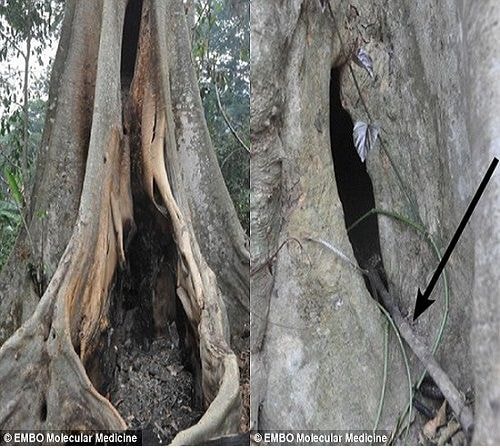Ebola outbreak originated from boy playing near bats
A two-year-old boy has been identified as “patient zero” of the Ebola virus. He was also the first victim to die from the dreaded infectious disease in a village in Guinea in late 2013.
The first patient, a boy described as “hyperactive”, was named Emile Ouamouno. Before the disease took his life, he was seen playing near a tree that was home to a colony of free-tailed bats.
 |
| Two-year-old boy Emile was recorded as the first case of Ebola in the current outbreak. Photo: news24.org.uk |
Sudden onset of a very high fever, vomiting and black diarrhea, the boy died on December 6, 2013, after only four days of illness. Following this loss, the family witnessed the deaths of his older sister Philomene, mother and grandmother.
According to News24, other mysterious deaths continued to appear in the village and surrounding areas. However, it was not until March 2014 that the culprit was officially recognized as the Ebola virus.
The outbreak marked the world's worst Ebola epidemic on record, spreading rapidly to Sierra Leone, Liberia, Nigeria, and then across Africa to Spain, the United States, and the United Kingdom. More than 7,800 people worldwide have died.
To find answers to the massive outbreak and the circumstances of the first death, scientists from Germany's Robert Koch Institute went directly to the scene to check the possibility of people coming into contact with bats, survey the local wildlife, and capture and sample bats in the village of Meliandou and the surrounding forests.
 |
| The large tree cavity where the free-tailed bats live is believed to be the source of the Ebola virus, causing the most terrible outbreak in history. Photo: news24.org.uk |
According to scientists, fruit bats are often suspected of carrying the Ebola virus and have been linked to previous outbreaks. This animal is also often hunted by African people for meat. However, in this outbreak, it is unlikely that this was the source of infection. Because if this were true, many adults could have been infected before or at the same time as 2-year-old Emile.
This argument leads to the possibility that the source of infection had nothing to do with bat-derived food, but that the 2-year-old boy had somehow come into contact with insect-eating free-tailed bats that lived in a large tree cavity where children in the village often gathered to play, catch and play with the animals.
One of the team members, Dr. Fabian Leendertz, said that Ebola virus could be transmitted to humans through contact with other wild animals or directly with bats. However, in a presentation in the journal EMBO Molecular Medicine, he said: “We have monitored other mammals living near the village of Meliandou, in southeastern Guinea, and found no evidence of a link to the ongoing outbreak.” According to Dr. Fabian, contact with bats seems to be the most likely cause of the current outbreak.
According to VnExpress






